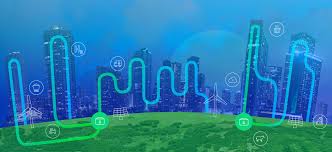The day started with a lunch with a handful of leadership across the company, where we went around the table and introduced ourselves, learning a little more about each persons role, and where they fit into the discussion. Breaking bread, and drinking wine is such a great way to kick off any discussion–I really do love the French way of doing business. We spent about an hour talking about the company, it’s goals with APIs across the different groups, and the conversation really helps set a great tone for the rest of the day. I wish more business meetings would begin with lunch this way.
Next, we spent two hours doing a presentation on APIs in general, the history of APIs, then moved into the business of API workflows, establishing a standardized API lifecycle, and discussed a little bit about where APIs are headed with streaming and event-driven APIs. While it was a presentation to about 40 individuals, it quickly turned into a conversation about how specific business modes or stops along the API lifecycle could be applied within Engie. We had much more to discuss as part of our presentation, but the 2 hours went fast, and we quickly moved to close things out with questions and answer session, allowing people to further ask questions about the bigger API picture.
After the general presentation there was a two hour session where each Engie group presented their APIs to each other, and I spent time providing one-on-one sessions with each team, listening to what they were trying to achieve, and answering specific questions about the technology, business, and politics of doing APIs at a large organization that is spread across many different groups, and geographic locations. Providing some valuable time for each team to have their specific needs met, but for some of it, there were multiple overlapping teams in the room listening to the discussions and learning from each other’s experience. Honestly, we learned a couple of new tricks regarding how to evangelize APIs at a large enterprise organization when it came to internal APIs–as they are doing some interesting things with their API program.
We closed the day with a cocktail hour, and while I continued to have conversations I also conducted more interviews, providing content for their internal marketing and evangelism. Overall we spent almost 8 hours with the Engie API team(s) talking about the potential for APIs at the energy company. It gave us with a look at how APIs are being applied across a progressive, global, energy company, and it provided them with much-needed experience about how to do APIs right. Not really crafting any official strategy, but just listening, and answering questions about how to improve what they are already doing, and shining a light on healthy practices occurring across the API space. Within large organizations, it can be difficult to keep up with the services and tooling that are present across the API sector and understand what applies to their operations and what does not–an area we are happy to help.
Sometimes it just helps to have someone along for the ride, and we’ll be spending more time with Engie in the future, helping them streamline their data and API workflows. If your organization is in need of someone to help you in your API journey, feel free to reach out, and we’ll see setup a single, or multi-day session like we did with Engie.
